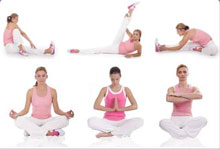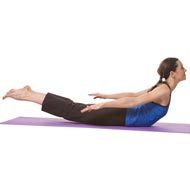- Raja yoga
- Yoga Stretches
- Jivamukti Yoga Poses
- Yoga Tree Pose
- Sun and Moon Yoga
- Wind Removing Pose
- Hare Pose
- Accomplished Pose
- Urdhva Mukha Pinch Mayurasana
- Revolved Abdomen Pose
- Raised Foot Pose
- Scorpion Pose
- Butterfly Pose
- Half Tortoise Pose
- Revolved Twist
- Balancing Stick Pose
- Cat Pose
- Supported Shoulderstand
- Crane Pose
- Handstand
- Happy Baby Pose
- Firefly Pose
- Scale Pose
- Side Plank Pose
- Upward Facing Two-Foot Staff Pose
- Reclining Big Toe Pose
- Stick Pose
- Revolved Head-to-Knee Pose
- Full Boat Pose
- Yoga arm balance poses
- Core Yoga
- Inversion Yoga Poses
- Seated And Twist Yoga
- Horse Pose
- Cobbler Pose
- Seated Wide Angle Pose
- The Compass Pose
- Half Crow Pose
- Bound Half Moon Pose
- Lotus Pose
- Reverse Warrior Pose
- Fixed Firm Pose
- Back-bend Poses
- Forward bend Poses
- Sarvangasana
- Ashtanga Yoga Poses
- Warm up poses
- Seated Poses
- Seated Forward Bends
- Chair Poses
- Standing Poses
- Standing Balancing poses
- Yoga Asanas
- Hatha Yoga Asanas
- Yoga Postures Online
- Partner Yoga Poses
- Anusara Yoga Poses
- Advanced Yoga poses
- Restorative Yoga Poses
- Kids Yoga Poses
- Beginning Yoga Postures
Upward Extended Feet Pose - Urdhva Prasarita Padasana
The Upward Extended Feet Pose is also known as the Urdhva Prasarita Padasana in Sanskrit. This may look like a fairly simple yoga exercise but in fact it requires some amount of skill along with a fair degree of abdominal strength in order to get it right.
In order to maximize the benefits of the Urdhva Prasarita Padasana (UPP), it is very important to use your core muscles correctly and in the right manner.
In ‘Light on Yoga,’ by B.K.S. Iyengar, this pose is recommended for its amazing ability to reduce fat around the abdomen, tone the organs in the abdomen and strengthen the lumbar region of the back. Abdominal toning here does not refer to those muscles that will give you a flashy six-pack but rather a deeper pair of abdominal muscles known as the psoas. The psoas lie under the organs of the abdomen and very few exercises actually affect them. By practicing the Upward Extended Feet Pose and strengthening these muscles, you also help transform your breathing, movement, flexibility, and digestion.
Steps :
- Firstly, lie down on your back with either with your arms raised above you alongside your ears or down along the sides of your body.
- Now tighten the core muscles of your abdomen. Draw the navel down to the spine and press the sides of your waist down to the floor.
- Exhale slowly as you raise both your legs off the floor
- While doing this make sure that your spine is straight and pressed down on the floor.
- Swing your legs up to a vertical position
- Stretch through your inner thighs and toes and hold the pose at this stage.
- Slowly lower your legs about a third way down. Hold on to the pose. At this point your lower back may come off the floor slightly. This is normal and acceptable.
- Now lower your legs to a few inches off the floor and continue to be in this pose for a few seconds
- Depending on your abdominal strength, you can then either swing your legs back up to vertical immediately or rest them on the floor for a few seconds before repeating the exercise again
- As a beginner, you can hold each stage of the pose for five to ten seconds. Gradually build up the time in ten second increments until you can hold each stage for a minute
Precautions :
There are a number of precautions that you should take before performing the Upward Extended Feet pose. Do not perform this pose in case you suffer from any of the following:
- Lower back injuries
- Chronic lower back pain
- Sciatic pain
- If you are pregnant
- If you are menstruating
Beginner’s Tip :
If the full pose is too difficult for you, it may simply mean that you need to strengthen your abdominal muscles more. Beginners can use the support of a wall to practice the pose. If you have some difficulty in practicing the pose, but still manage to get it right; you can try extending one leg at a time while the other leg is bent with the foot on the floor to tone to build up your muscle strength gradually. It is also easier to do this pose if your press your arms and palms into the floor as you raise your legs up. Besides this you could use a prop such as a sandbag and weigh your arms down when practicing the pose. You can also try this pose with your palms under your buttocks if you find it difficult to raise both your legs together. If your legs are shaking, squeeze your thighs together as you lift them or bend the knees until the shaking stops. As a beginner it is important that you have a trained yoga professional to guide you through the various stages of the Upward Extended Feet Pose. This will help avoid any injury to the muscles as also avoid over straining the muscles in any way.
Benefits to Body Parts :
Some of the major benefits of practicing the Upward Extended Feet pose are as follows:
- It helps in strengthening the core abdominal muscles
- It tones the organs in the abdomen
- It improves lumbar spine strength
- It helps Improve flexibility of the hip flexors
- Practicing the pose also helps in reducing fat in the abdominal area.
Therapeutic Applications :
Some of the therapeutic benefits that the pose provides are as follows
- To treat stomach ailments
- Improves digestion and elimination
- Improves posture and alignment
- Improves breathing
- For weight loss and obesity
- Strengthens the Manipura chakra that leads to the building up of self-discipline and will power
Variations :
- Lie on your side with your hips to a wall
- Swing your legs upwards so that the backs of the legs and heels can be on the wall
- Press your buttocks against the wall for extra support. If this is not possible and your pelvis and lower back rise up, slide away from the wall until your lower back and pelvis are flat on the floor
- Extend the arms up along your ears, interlock your fingers and breathe slowly and deeply
- Keep the hips on the floor, inhale, and slowly raise your legs so that your heels are off but the thighs are pressed into the wall
- Hold this position for a few counts
- Exhale and place your heels back on to the wall
- Change the interlock of your fingers and repeat the exercise
Follow Up Poses :
There are a number of follow up poses that could be done soon after you have completed performing the Upward Extended Feet Pose.
- Warrior Pose III (Virbhadrasana III)
- Monkey Pose (Hanumasnasa)
- Reclining Big Toe Pose I (Supta Padangusthasana I)
- Reclining Big Toe Pose II (Supta Padangusthasana II)
- Firefly Pose (Tittibhasana)
 Find Pose
Find Pose

